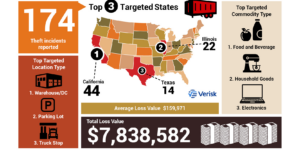Most insurance companies were setting out on a digital transformation journey with an expected time frame of about three to five years before COVID-19. Then the pandemic accelerated the need for digitization and shortened that time frame drastically—to about six months, in most cases.
Executive Summary
Insurance company leaders need to critically evaluate the function and structure of their marketing departments to determine if they’re well-positioned to fully embrace modern approaches now and into the future, writes Denim Social President Gregory Bailey.In-house teams might be used for handling copy and visual, but managing CRMs, digital marketing platforms and data are now also critical elements of insurance marketing responsibilities. Here, Bailey offers five tips for carrier leaders to restructure and create marketing departments suited to pull off digital strategies.
Insurance marketing teams were already using digital marketing prior to the pandemic. But as the pandemic created a world mostly void of face-to-face customer interactions, they had to ramp up digital campaigns and touchpoints significantly—and quickly. Marketers had no choice but to mold ad-hoc digital marketing strategies onto existing department structures.
One problem with charging existing teams with new strategies is that they won’t always have the expertise necessary to pull them off. In-house teams might be used to handling copy and visual, as these have been and will continue to be staples of marketing for a long time. As a result of accelerated digitization across the industry, however, managing CRMs, digital marketing platforms and data are now also critical elements of insurance marketing responsibilities.
Can your team support that, or do you need to expand and restructure?
After more than a year of working this way, it’s time for insurance company leaders to take a deep breath and a step back. They need to critically evaluate the function and structure of their marketing departments to determine if they’re well-positioned to fully embrace modern approaches now and into the future. The tips listed below can help insurance company leaders create marketing departments best suited for pulling off excellent digital marketing strategies.
- Combine your brand and business unit marketing teams.
The traditional marketing department structure at insurance companies separates brand marketers and business unit marketers into two or more teams. The brand team is responsible for building and strengthening brand identity and recognition and typically measures its marketing success in recall and impression metrics.
The business unit teams, on the other hand, are responsible for supporting each line of business in the company, like property/casualty, life insurance, etc. These teams produce insurance marketing materials that generally aim to drive direct sales of a given product or service. A large part of measuring success for these teams comes down to conversion metrics.
When these teams operate separately, they can too easily become misaligned around goals. Building the brand, especially on digital channels like social media, can also have a direct impact on conversions. Brand marketers need to think with a conversion mindset, and business unit marketers need to consider how traditionally brand-centric tools, like social media, actually can help grow the business. Essentially, you want to centralize your marketing team so every marketer can collaborate and communicate across the business and unify around shared goals.
- Democratize digital marketing.
Marketers shouldn’t be the only team members able to drive your digital insurance marketing efforts. Agents, in particular, can have a huge impact on the business when they do marketing from their own social media business accounts. This approach, known as social selling, humanizes the brand and creates stronger connections between prospects and agents. It can help move prospects closer to conversion and continue nurturing customer relationships once they do convert.
If employees are posting brand-related content on social media, however, marketers will need a way to oversee their activity to ensure all electronic communication stays compliant and consistent with brand messaging standards. A content management platform can help. Look for a platform outfitted with permission settings, user roles and governance features to help you democratize content and eliminate any bottlenecks that could stall your social media marketing efforts.
- Keep growing your team.
If you’re looking to expand the expertise of your team and bring on more marketers, a natural assumption might be to hire professionals with direct insurance marketing experience. But remember that growth is the imperative behind your digital transformation in the first place, and if you really want to expand, that means expanding the perspectives on your teams as well. Hiring only marketers with industry experience can make your company seem indistinguishable from the rest as content will often look and feel the same.
Instead, consider hiring people with different backgrounds and experiences, even from outside the industry, to shake things up with new perspectives. People from retail or consumer-brand backgrounds, for example, can invigorate your digital marketing strategy with fresh, new ideas and expose your team to different best practices that can help you stand out from the competition. Look into other industries that really seem to understand consumers and consumer behaviors.
- Embrace agility.
Traditional marketing department structures at insurance companies can seem rigid and unable to change easily. But if the pandemic taught us anything, it’s that agility in the face of the unexpected is one key to a strong business.
Structure your team in a way that enables you to pivot quickly when necessary—not just in the face of a global pandemic but also with constantly changing consumer preferences. Build a team that can constantly react to the ever-changing market with new digital tactics. And make sure your marketing team is supported by the right tools and marketing technology infrastructure to support such efforts.
Invest in digital platforms that can automate campaign, content and message delivery across channels to keep your reaction nimble and responsive. The last thing you want is to spend weeks trying to get your marketing materials out, only to find they’re now irrelevant due to some market trend.
- Make data-informed decisions.
When it comes to essential infrastructure for insurance companies today, remember the importance of data. Data and analytics are critical, and you need the right technology to capture, compile and disseminate data from disparate systems. The insights you can glean from well-organized data analysis can help your insurance marketing team make the best-informed decisions and provide the room to experiment and test messaging based on the most current information.
The pandemic has forced the hand of many insurance marketing executives. Prioritizing digital marketing efforts is imperative today, but if companies want to see the most return from these investments, they need the right marketing structures to support them. Then, properly designed teams with the right tools and technologies in their arsenals can continue responding to changes as they come, constantly evolving digital marketing strategies and driving success.





















 Hurricanes Helene, Milton Pressure NFIP; Expected Loss Ratio 200%
Hurricanes Helene, Milton Pressure NFIP; Expected Loss Ratio 200%  More Than Half of All Employees in Finance, Insurance Work Remotely: Triple-I
More Than Half of All Employees in Finance, Insurance Work Remotely: Triple-I  Insurance Industry Labor Market Remains Stable: Report
Insurance Industry Labor Market Remains Stable: Report  Mitigating Flood Risk 10x More Cost Effective Than Rebuilding: Swiss Re
Mitigating Flood Risk 10x More Cost Effective Than Rebuilding: Swiss Re 
